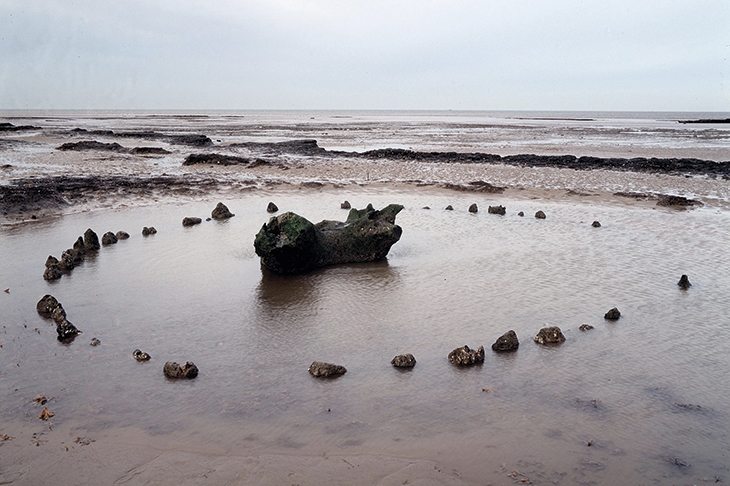Francis Pryor claims he would be a rich man if every person who told him that the Fens were ‘flat and boring’ had given him five quid. Yet these million acres of water-logged land making their way from Lincolnshire through Norfolk and towards Cambridge have one quality that makes them irresistible to archaeologists like him. The peat preserves wood perfectly for thousands of years in a way that happens almost nowhere else in the country.
As a result, and although few of us are aware of it, ‘some of the most imaginative and technically advanced excavations in the world are taking place in the Fens at the moment’. Using new archaeological techniques such as ground-penetrating radar and laser scanning (Lidar), as well as old-fashioned digging, some quite fabulous wooden artefacts from the Bronze Age have just emerged. The most spectacular is ‘Seahenge’, the mortuary ring with an upturned oak at its centre which was first revealed after storms in early 2014. It was built in exactly 2049 BC — wood, unlike stone, can be dated to within a year.
Finds like these matter because we still know remarkably little about the Bronze Age, despite it lasting so long — almost two millennia, from around 2500 BC to 800 BC — and it being been one of Britain’s most affluent periods. The reason is simple: we’ve sat on a great deal of the stuff.
Britain was then at the top of the European commodities market. Welsh copper mines, Cornish tin and the lead of the Somerset Levels allowed us to produce far more than anyone else. Bronze was not just a material but a currency, with bronze axes used for barter, so we were in effect printing money. This glorious age, symbolised by the fabulous Mold Cape made of beaten gold in the British Museum, spurred a demographic explosion. The British population rose to
a level archaeologists are continually having to revise upwards as they make fresh discoveries, but by 1000 BC may have been as high as two million — an astonishing figure considering that the rural population today is not much more than five million.
The whole way we view the Bronze Age has changed, and Pryor has been at the forefront of this investigation. His work at Flag Fen near Peterborough was one of the first excavations to show how developed life in the Fens had become for prehistoric man.
A local farmer as well as an archaeologist, Pryor has a pragmatic and refreshingly jargon-free approach. He has spent most of his professional life working in the Fens and this book is a distillation of everything he has learned, not just about the archaeology but the historical changes that have occurred since their drainage, when it was realised how fertile the resulting soil would be. His enthusiasm is infectious, whether he’s glimpsing Ely cathedral from a train, coming across John Clare’s grave or counting the bricks of Tattershall Castle.
He’s the sort of archaeologist who can drive his own digger, and being a farmer he recognises why Bronze Age man might want to separate cattle into pens — not for ‘ritualistic’ reasons, but simply to prevent inbreeding with neighbouring herds.
Pryor describes the dramatic moment when he first saw the ends of some wooden posts sticking out of the mud and realised that they were split oak, so could form part of a Bronze Age enclosure. This was at Must Farm Quarry which has since seen some of the most revelatory discoveries being made, with the largest assemblage of prehistoric wooden boats in Europe. The presumption has to be that many thousands more are still buried in the Fens since the Wash provided a sheltered harbour for all the trading that took place along the coast and across the North Sea. Together with the boats came fish and eel traps in the form of big willow baskets, and votive offerings of fine bronze swords and spears, tossed into the river in perfect condition.
That said, the story of the Bronze Age contains a nasty twist. The arrival of the new technology of iron in around 800 BC, far from being an advance, prompted the biggest recession in our history, one that lasted almost two centuries from 800 to 600 BC, beside which any 18th-century bubble or recent financial crises pale. Iron had been developed in the eastern Mediterranean and it was not a commodity with which England was particularly blessed. Nor were we good at being early adopters. Whole burial caches of bronze axes have been found, discarded like Weimar currency as no longer worth anything.
Many writers would baulk at splashing through thousands of years of mud and peat to find the shards of evidence which reveal life in the Bronze Age; that Pryor has made such a success of it, both in life and in this book, is a testament to his boundless enthusiasm.






Comments